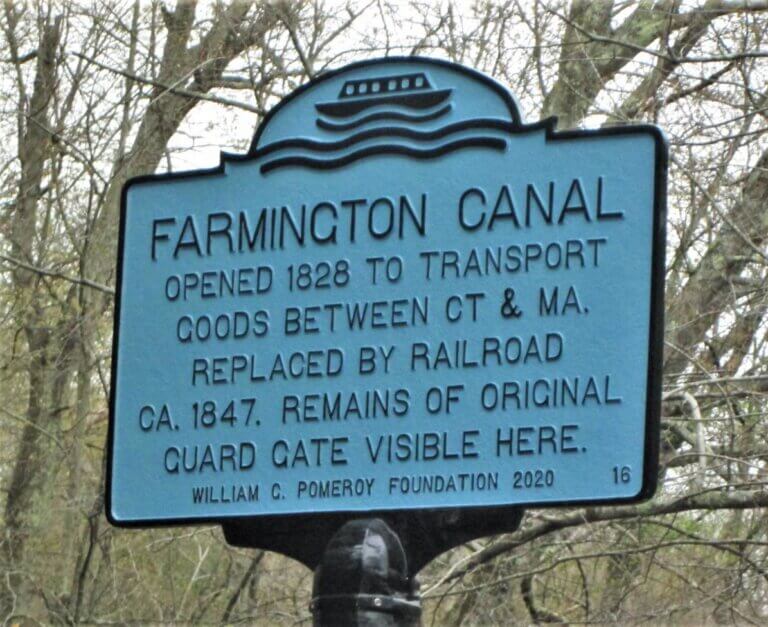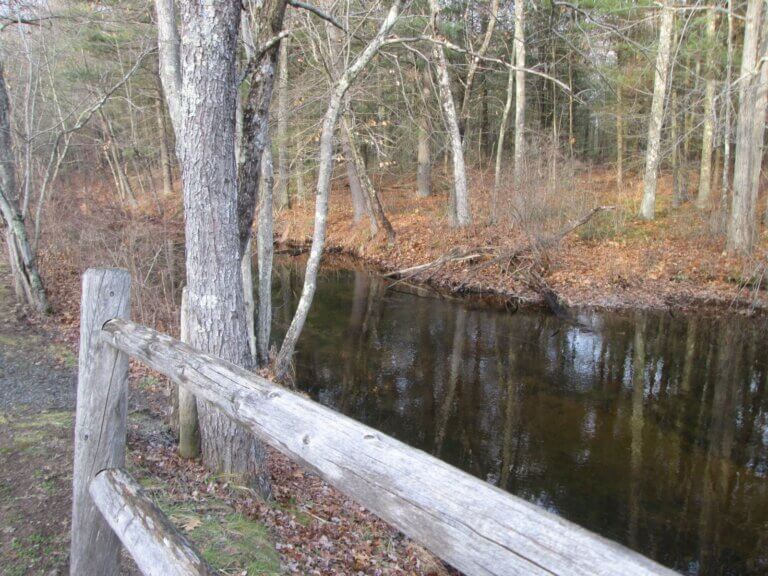FARMINGTON CANAL
- Program
- Subject
- Location
- Lat/Long
- Grant Recipient
-
Historic Transportation Canals
-
Transportation
- 263H+P8 Southwick, MA, USA
- 42.004374, -72.771747
-
Southwick Historical Society
FARMINGTON CANAL
Inscription
FARMINGTON CANALOPENED 1828 TO TRANSPORT
GOODS BETWEEN CT & MA.
REPLACED BY RAILROAD
CA. 1847. REMAINS OF ORIGINAL
GUARD GATE VISIBLE HERE.
WILLIAM G. POMEROY FOUNDATION 2020
Similar to the Erie Canal of New York State, the Farmington Canal stretched nearly 80 miles and featured locks, bridges, and aqueducts which traversed the diverse geography of Massachusetts and Connecticut and was a feat of modern engineering for its time.
Officially opening in 1828, the Farmington Canal was welcomed with a great deal of excitement and anticipation as evidenced in a July 4th 1828 article from the New England Farmer which reported on the opening of the Farmington Canal:
On Friday the 27th instant the first canal boat, called the Jas. Hillhouse, was launched at Farmington, Conn. on the canal at that place, under a salute of artillery, with a band of music, &c. A party of two hundred ladies and gentlemen embarked on board, and were drawn by a team of decorated grays [sic] a few miles on the new channel opened to commerce in that direction. They crossed the Farmington river, on an aqueduct thirty-six feet in height, partook of refreshments on the excursion, and returned at sunset, amidst the acclamations of a large concourse of spectators assembled on the rationally joyful occasion.
For nearly 20 years the Farmington Canal transported goods between Massachusetts and Connecticut. Following the development of railroads, the Farmington Canal was quickly abandoned and replaced by rail around 1847. The railroad was profitable for a number of years, until it too, was abandoned. The paths of the railroad and canal have since been covered with asphalt and converted to biking and running paths. Some remnants of the old canal still exist, such as an original canal guard gate used to control the flow of water into the old Farmington Canal.


